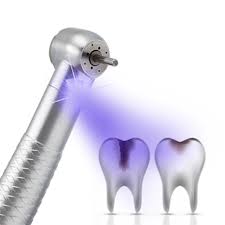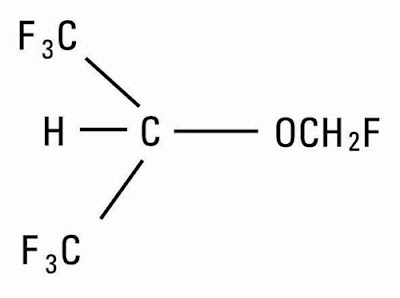Dental caries, commonly known as cavities or tooth decay, remains one of
the most prevalent chronic diseases worldwide. Early diagnosis and treatment of
dental caries is critical in preventing further progression and promoting oral
health. Traditional diagnosis methods rely significantly on visual and tactile
examination which have limitations. Recent years have seen promising
advancements in technology that can potentially transform how dental caries are
detected.
Optical Detection Systems
One of the most investigated non-invasive detection methods is based on optical
imaging technologies. Certain wavelengths of light in the visible or near
infrared spectrum have been found to interact differently with healthy and
demineralized tooth structure affected by caries. This property is utilized by
devices to detect the onset and extent of Dental
caries Detectors. Some commercial optical systems use laser
fluorescence to illuminate the tooth surface and analyze fluorescence spectra
returned.
The variation and intensity of fluorescence
detected helps identify demineralization below the enamel surface even before
visual signs appear. Other high resolution optical imaging modalities like
quantitative light-induced fluorescence and digital imaging fiber-optic
trans-illumination are also being researched. Preliminary studies indicate
these technologies can detect occlusal and smooth surface caries earlier than
visual examination alone.
Photoacoustic Spectroscopy
An emerging non-destructive evaluation technique gaining attention is
photoacoustic spectroscopy. It works on the photoacoustic effect where
excitation of a material with light produces localized heating and thermal
expansion causing ultrasonic waves. These ultrasonic signals carry unique
spectroscopic signatures of the material composition and structure. In dental
application, laser pulses in the near infrared range illuminate the tooth and
the generated photoacoustic waves are measured by an ultrasonic transducer.
Variation detected in the sound waves generated from healthy and demineralized
tooth structures helps distinguish between them. Research has demonstrated
potential to detect caries beneath restorations and diagnose caries at early
non-cavitated stages not seen on regular radiographs. The ability to assess
demineralization below restoration surfaces non-invasively holds promise.
Electrical Conductivity Measurements
Change in the electrical properties of tooth structure due to demineralization
is another principle evaluated by various caries detectors. Conductance-based
methods exploit the fact that dental caries decreases the tooth's resistant
nature by replacing mineral hydroxyapatite with conductive bacterial byproducts
and tissue fluids. Devices measure electrical resistance or conductance across
tooth surfaces using direct contact probes or electrodes placed inside mouth
trays and guards. Conductance measurements reveal quantitative information
about enamel demineralization. Some products utilizing this technology have
demonstrated ability to detect occlusal caries with high accuracy and serve as
a supplement to traditional examination. The non-ionizing, non-invasive nature
of such electrical caries detection makes them well-suited for routine risk assessment
applications.
Tactile/Impedance Based Systems
Another category of emerging detectors rely on tactile examination using
miniaturized transducers and measurement of material properties like impedance.
Instead of indirect optical or electrical evaluation, these work based on
direct material-transducer interactions capturing differences in hardness,
stiffness and resonance frequency changes associated with demineralization.
Some intraoral probes use piezoelectric sensors to tap teeth and analyze sound/
vibration signals reflected. The impedance mismatch detected between healthy
and carious enamel helps pinpoint locations needing restorative treatment.
Similar principle is exploited in other tactile devices adopting different
transducer designs. They have ability to quantitatively map enamel
demineralization, measure lesion severity and monitor treatment effect over
time. Combined with imaging, tactile caries detection holds promise to make
diagnosis more objective by directly sensing local mechanical properties of
tooth structure.
Portable Caries Risk Assessment Devices
Advancements in sensor miniaturization and internet connectivity have enabled
development of portable caries risk assessment devices. These affordable
self-use technologies integrate multiple detection modalities tailored for
home-use and incorporate artificial intelligence for automated analysis. For
example, one such integrated device uses laser fluorescence, electrical
conductance and pH measurements to comprehensively evaluate risk factors for
caries like degree of tooth demineralization, microbial activity in dental
plaque and saliva. The detected multi-dimensional data when coupled with
personal dental history information, feeding habits, medication use and other
risk factors via a mobile application helps generate individualized caries risk
scores and prevention plans. Such portable self-assessment tools hold promise
to empower individuals to proactively manage their oral health and risk of
future caries between routine dental visits. If validated through further
research, they could play a key role in democratizing dental diagnosis and
facilitating personalized preventive strategies at population level.
Recent years have seen significant technological progress towards development
of novel Dental
Caries Detectors based on diverse detection principles. Many emerging
optical, electrical, tactile and multi-modal caries assessment devices
demonstrate potential to detect dental caries lesions much earlier and more
objectively than conventional methods. This promises to better manage the
global oral health burden of dental caries by facilitating early diagnosis and
targeted preventive interventions. Realization of their full potential would
depend on successful transitioning of technologies from research to practice
after addressing existing challenges. Dental caries detectors offer hope to
revolutionize how one of the most prevalent diseases is diagnosed. With ongoing
research progress and multi-disciplinary collaborations, we may see caries
diagnosis transforming from subjective clinical examination to a more precise
objective technical assessment in the near future.




Comments
Post a Comment